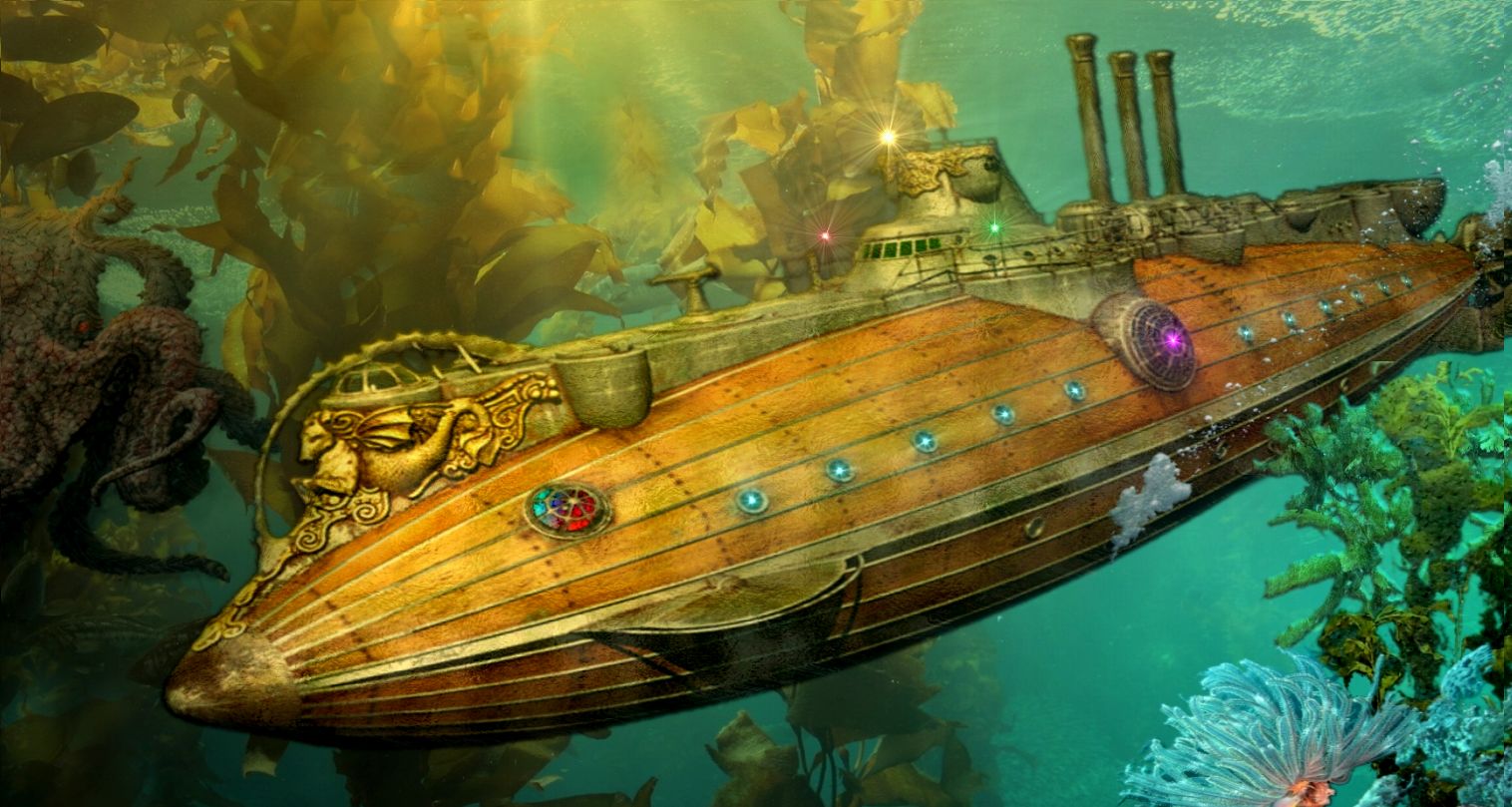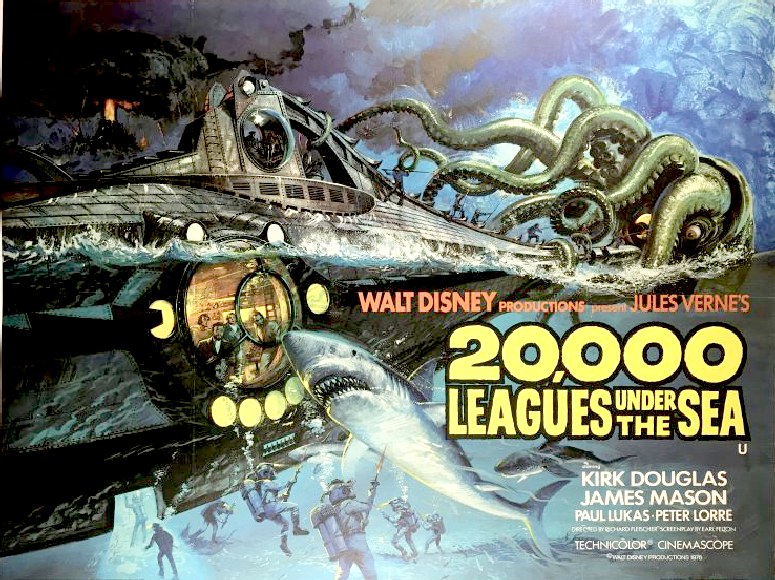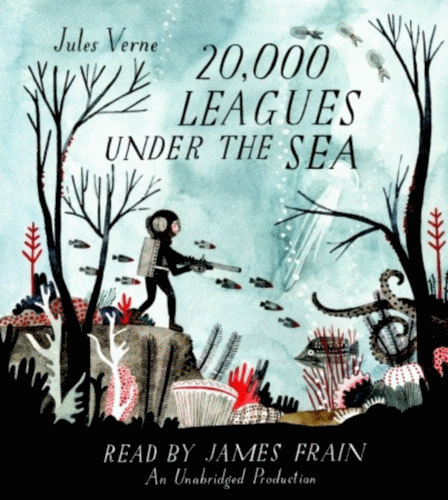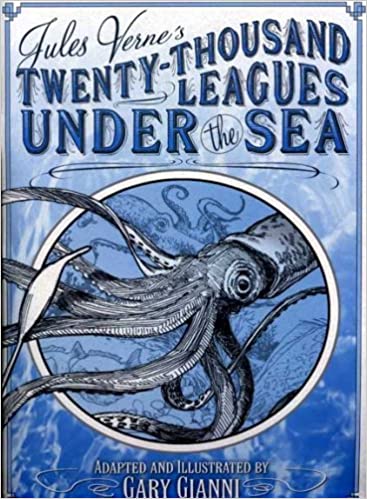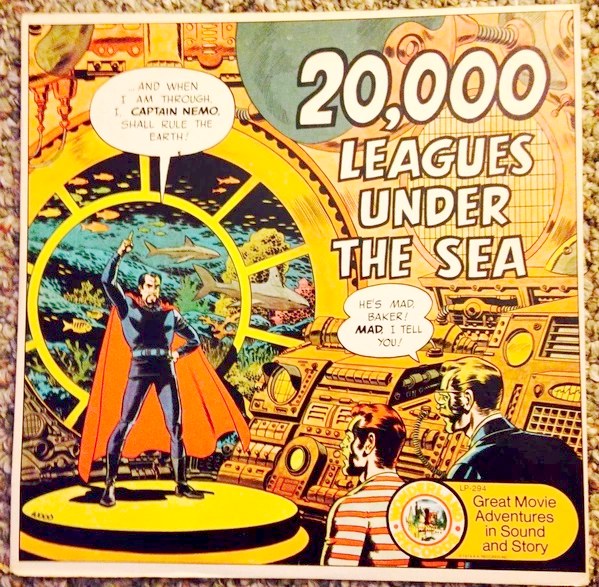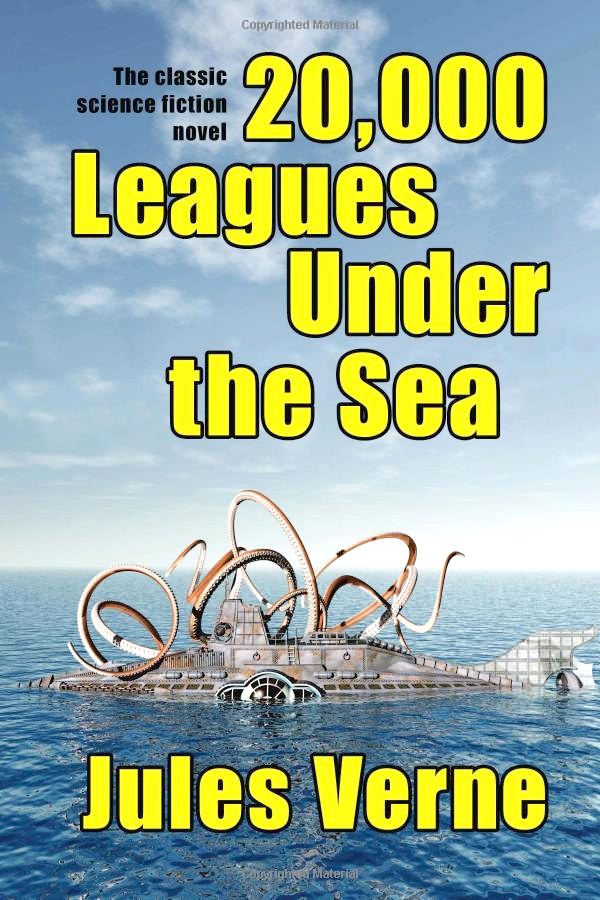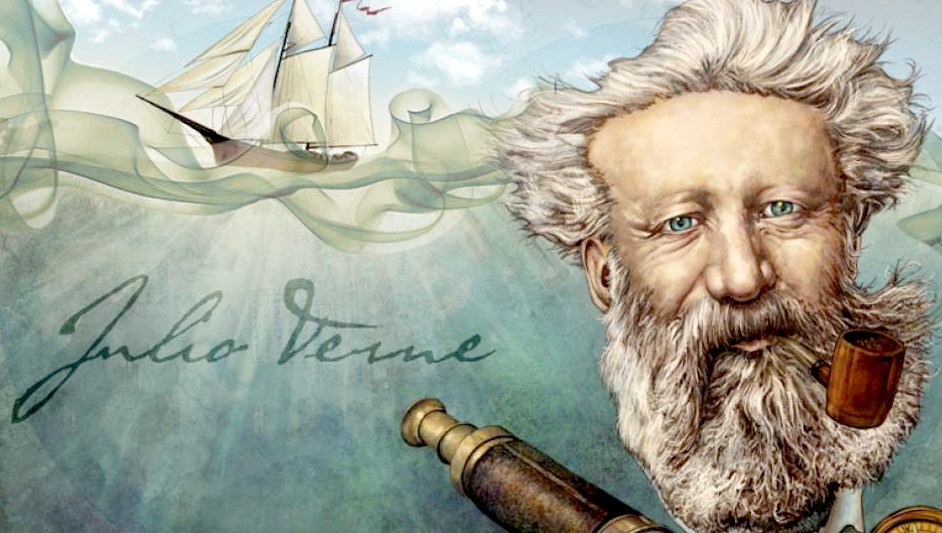|
20,000 LEAGUES UNDER THE SEA
Please use our A-Z INDEX to navigate this site or return HOME
|
|
|
This book is
one of Jules Verne’s best sellers; it showcases his talent in being able to build the perfect narrative and above all, making it plausible. The rich characters from captain Nemo to the rest of the crew with the rich descriptive scenes makes this story come alive right from page one; it has everything in it – from sea monsters to simmering tension between the central figures. A perfectly developed book and
in our view, a must-read for all Verne fans.
20,000 Leagues Under the Sea is part of Jules Verne’s most popular trilogy, along with Around the World in Eighty Days and Journey to the Center of the Earth. After chasing a “monster,” the protagonists find themselves prisoners on a futuristic submarine called the Nautilus. Their captor is Captain Nemo, and the prisoners enjoy a wild ride on the Nautilus. Visiting far-flung regions of the ocean, they see amazing coral formations, sunken vessels, the Antarctic ice barrier, the South Pole, the transatlantic telegraph cable, and Atlantis, the legendary underwater kingdom. In the underwater forests off Crespo Island, they hunt sharks, but when the submarine returns to the Atlantic Ocean, a giant squid attacks them.
PLOT
During the year 1866, ships of various nationalities sight a mysterious sea monster, which, it is later suggested, might be a gigantic narwhal. The U.S. government assembles an expedition in New York City to find and destroy the monster. Professor Pierre Aronnax, a French marine biologist and the story's narrator, is in town at the time and receives a last-minute invitation to join the expedition; he accepts. Canadian whaler and master harpooner Ned Land and Aronnax's faithful manservant Conseil are also among the participants.
The rest of the novel describes the protagonists' adventures aboard the Nautilus, which was built in secrecy and now roams the seas beyond the reach of land-based governments. In self-imposed exile, Captain Nemo seems to have a dual motivation — a quest for scientific knowledge and a desire to escape terrestrial civilization. Nemo explains that his submarine is electrically powered and can conduct advanced marine research; he also tells his new passengers that his secret existence means he cannot let them leave — they must remain on board permanently.
The novel's later pages suggest that Captain Nemo went into undersea exile after his homeland was conquered and his family slaughtered by a powerful imperialist nation. Following the episode of the devilfish, Nemo largely avoids Aronnax, who begins to side with Ned Land. Ultimately, the Nautilus is attacked by a warship from the mysterious nation that has caused Nemo such suffering. Carrying out his quest for revenge, Nemo — whom Aronnax dubs an "archangel of hatred" — rams the ship below her waterline and sends her to the bottom, much to the professor's horror. Afterward, Nemo kneels before a portrait of his deceased wife and children, then sinks into a deep depression.
..
Jules Verne was the author of many adventure stories:
1
Twenty Thousand Leagues Under the Sea
- Part
1 index - Part
2 index
9
Round the Moon (Extraordinary Voyages, #7)
Jules Verne is also known as the 'Father of Science Fiction'
|
|
|
|
|
|
It was Jules Verne's fictional character, 'Philleas Fogg', who suggested that it might be possible to travel Around The World In 80 Days. But what about doing it in a Zero Emission yacht driven by electric hydro-jets? With the advent of solar power and liquid hydrogen, it is a distinct possibility - on a scale of the wager that the legendary Philleas Fogg entered into at the Reform Club in 1872.
JULES VERNE LINKS & REFERENCE
https://www.
|
|
|
Please use our A-Z INDEX to navigate this site or return HOME
This website is Copyright © 2021 Jameson Hunter Ltd
|
